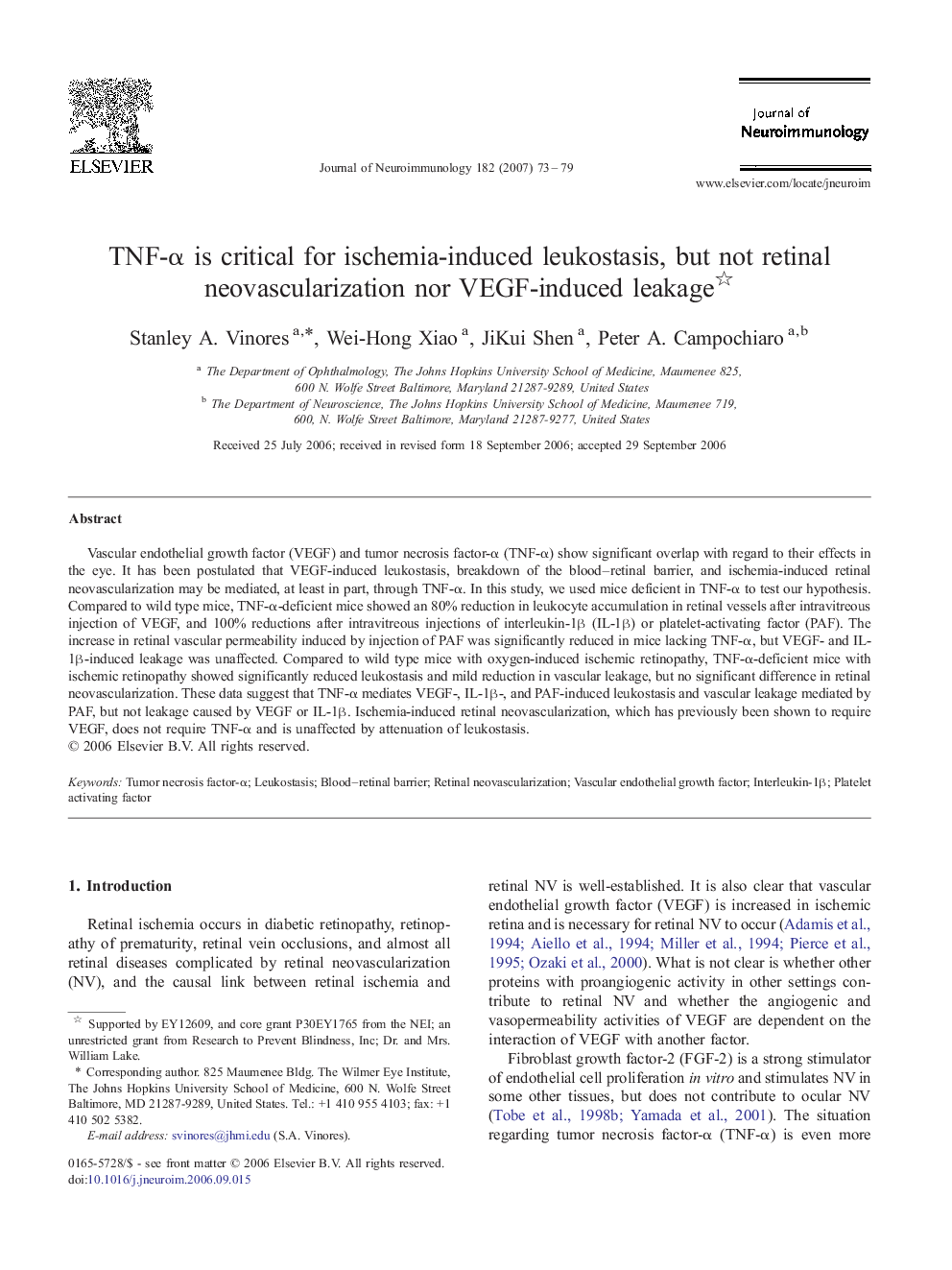| کد مقاله | کد نشریه | سال انتشار | مقاله انگلیسی | نسخه تمام متن |
|---|---|---|---|---|
| 3065849 | 1580488 | 2007 | 7 صفحه PDF | دانلود رایگان |

Vascular endothelial growth factor (VEGF) and tumor necrosis factor-α (TNF-α) show significant overlap with regard to their effects in the eye. It has been postulated that VEGF-induced leukostasis, breakdown of the blood–retinal barrier, and ischemia-induced retinal neovascularization may be mediated, at least in part, through TNF-α. In this study, we used mice deficient in TNF-α to test our hypothesis. Compared to wild type mice, TNF-α-deficient mice showed an 80% reduction in leukocyte accumulation in retinal vessels after intravitreous injection of VEGF, and 100% reductions after intravitreous injections of interleukin-1β (IL-1β) or platelet-activating factor (PAF). The increase in retinal vascular permeability induced by injection of PAF was significantly reduced in mice lacking TNF-α, but VEGF- and IL-1β-induced leakage was unaffected. Compared to wild type mice with oxygen-induced ischemic retinopathy, TNF-α-deficient mice with ischemic retinopathy showed significantly reduced leukostasis and mild reduction in vascular leakage, but no significant difference in retinal neovascularization. These data suggest that TNF-α mediates VEGF-, IL-1β-, and PAF-induced leukostasis and vascular leakage mediated by PAF, but not leakage caused by VEGF or IL-1β. Ischemia-induced retinal neovascularization, which has previously been shown to require VEGF, does not require TNF-α and is unaffected by attenuation of leukostasis.
Journal: Journal of Neuroimmunology - Volume 182, Issues 1–2, January 2007, Pages 73–79